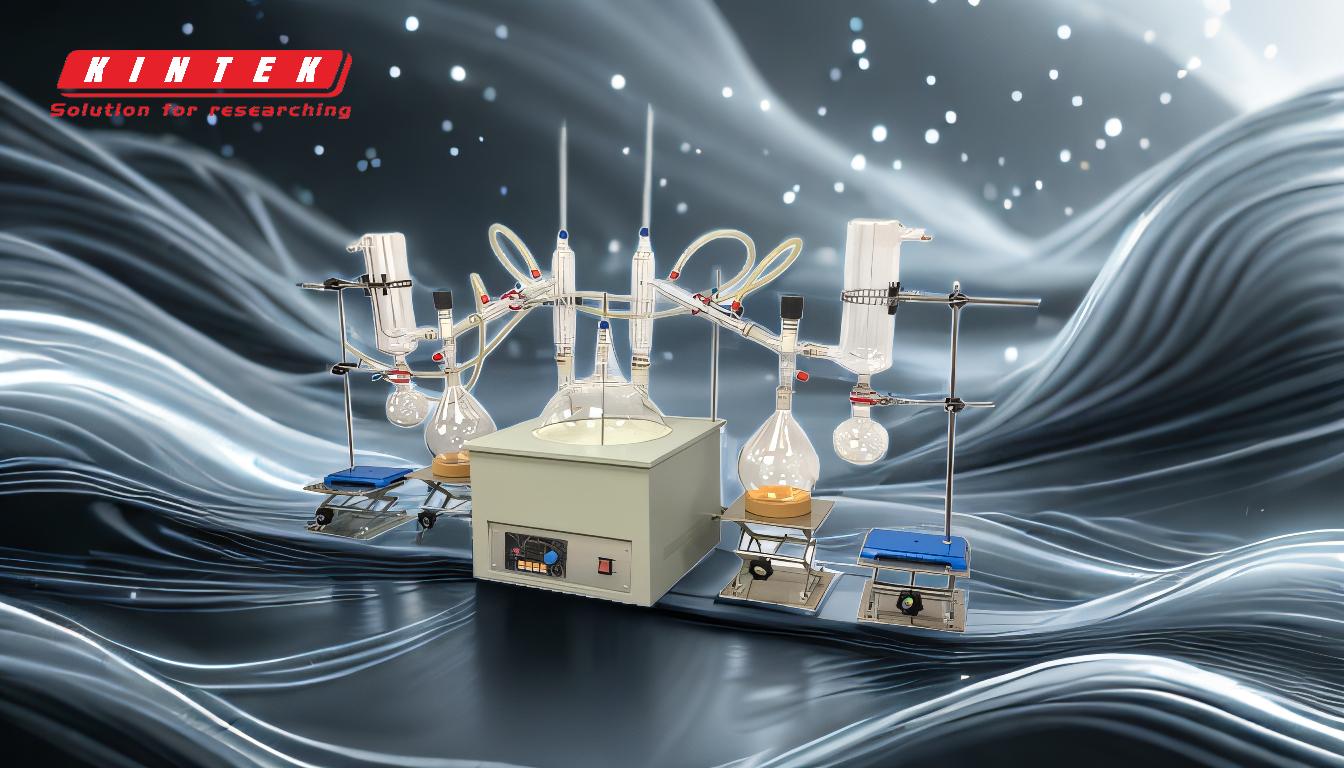Short-path distillation is named for the minimal distance that the vaporized material travels before being condensed. This technique is particularly effective for separating heat-sensitive and high-boiling-point materials due to its operation under reduced pressure, which minimizes thermal degradation. The process involves a short vapor path, often just a few centimeters, from the evaporator to the condenser, which is typically located within the same chamber. This setup not only enhances the efficiency of the distillation process but also allows for the handling of materials that require precise temperature control and minimal exposure to heat.
Key Points Explained:

-
Definition of Short-Path Distillation:
- Short-path distillation is a specialized form of distillation where the vaporized compounds travel a very short distance—often only a few centimeters—before being condensed. This method is particularly useful for substances that are sensitive to heat or have high boiling points.
-
Operational Mechanism:
- The process operates under a vacuum, which significantly lowers the boiling points of the substances, allowing them to evaporate at lower temperatures. This is crucial for preventing the thermal degradation of sensitive compounds.
- The vapor path is designed to be as short as possible, typically under 1 meter, to minimize the exposure of the vapor to heat and to enhance the efficiency of the condensation process.
-
Equipment Configuration:
- The typical setup includes a boiling flask, a condenser, and a receiver flask. In more advanced systems, like the Wiped-Film Molecular Still (WFMS), the equipment is designed for continuous operation, which increases throughput and efficiency.
- The condenser is placed very close to the heating surface, often within the same chamber, to ensure that the vapor condenses almost immediately after it is formed.
-
Advantages of Short-Path Distillation:
- Minimized Thermal Degradation: The reduced pressure and short vapor path help in preserving the integrity of heat-sensitive materials.
- High Efficiency: The short distance and rapid condensation lead to a more efficient separation process, reducing the time and energy required.
- Versatility: This method is suitable for a wide range of materials, including those with high boiling points and complex mixtures.
-
Applications:
- Short-path distillation is widely used in the pharmaceutical, chemical, and food industries for the purification of essential oils, vitamins, and other sensitive compounds.
- It is also employed in the production of high-purity chemicals and in the recovery of solvents from complex mixtures.
-
Comparison with Other Distillation Techniques:
- Unlike traditional distillation methods, which may require longer vapor paths and higher temperatures, short-path distillation offers a more controlled and gentle approach, making it ideal for delicate substances.
- The ability to operate at very low pressures (as low as 0.001mbar) sets it apart from other techniques, providing a unique advantage in processing high-boiling-point materials.
In summary, short-path distillation is named for its characteristic short vapor path, which is integral to its design and functionality. This method is highly effective for the separation and purification of sensitive and high-boiling-point materials, offering significant advantages in terms of efficiency, product quality, and operational control.
Summary Table:
| Aspect | Details |
|---|---|
| Definition | Specialized distillation with a short vapor path (few centimeters). |
| Operational Mechanism | Operates under vacuum to lower boiling points and prevent thermal degradation. |
| Equipment | Boiling flask, condenser, receiver flask; advanced systems like WFMS. |
| Advantages | Minimized thermal degradation, high efficiency, and versatility. |
| Applications | Used in pharmaceuticals, chemicals, and food industries for purification. |
| Comparison | More controlled and gentle than traditional distillation methods. |
Learn how short-path distillation can optimize your processes—contact us today!










